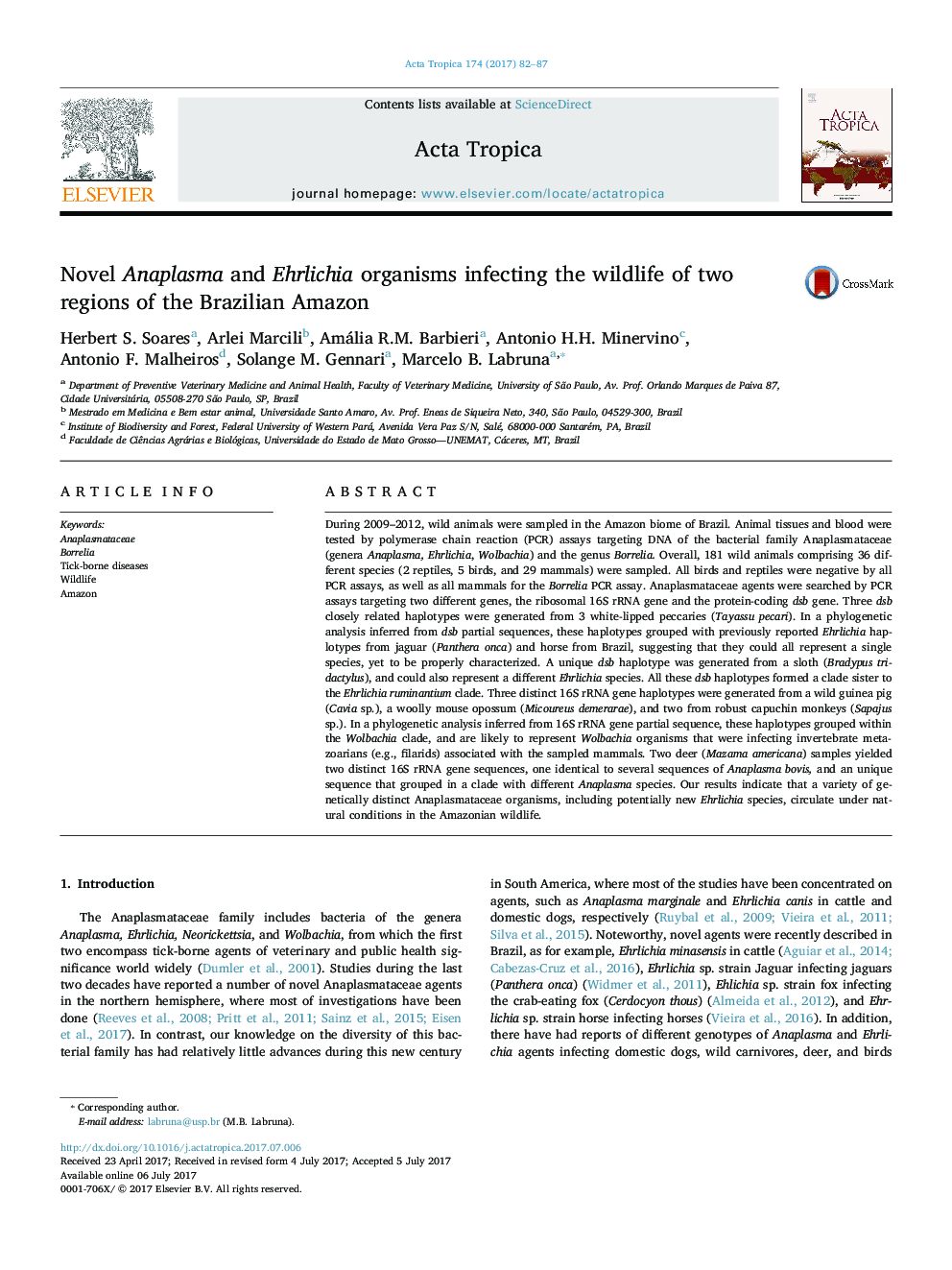| کد مقاله | کد نشریه | سال انتشار | مقاله انگلیسی | نسخه تمام متن |
|---|---|---|---|---|
| 5670764 | 1592750 | 2017 | 6 صفحه PDF | دانلود رایگان |

During 2009-2012, wild animals were sampled in the Amazon biome of Brazil. Animal tissues and blood were tested by polymerase chain reaction (PCR) assays targeting DNA of the bacterial family Anaplasmataceae (genera Anaplasma, Ehrlichia, Wolbachia) and the genus Borrelia. Overall, 181 wild animals comprising 36 different species (2 reptiles, 5 birds, and 29 mammals) were sampled. All birds and reptiles were negative by all PCR assays, as well as all mammals for the Borrelia PCR assay. Anaplasmataceae agents were searched by PCR assays targeting two different genes, the ribosomal 16S rRNA gene and the protein-coding dsb gene. Three dsb closely related haplotypes were generated from 3 white-lipped peccaries (Tayassu pecari). In a phylogenetic analysis inferred from dsb partial sequences, these haplotypes grouped with previously reported Ehrlichia haplotypes from jaguar (Panthera onca) and horse from Brazil, suggesting that they could all represent a single species, yet to be properly characterized. A unique dsb haplotype was generated from a sloth (Bradypus tridactylus), and could also represent a different Ehrlichia species. All these dsb haplotypes formed a clade sister to the Ehrlichia ruminantium clade. Three distinct 16S rRNA gene haplotypes were generated from a wild guinea pig (Cavia sp.), a woolly mouse opossum (Micoureus demerarae), and two from robust capuchin monkeys (Sapajus sp.). In a phylogenetic analysis inferred from 16S rRNA gene partial sequence, these haplotypes grouped within the Wolbachia clade, and are likely to represent Wolbachia organisms that were infecting invertebrate metazoarians (e.g., filarids) associated with the sampled mammals. Two deer (Mazama americana) samples yielded two distinct 16S rRNA gene sequences, one identical to several sequences of Anaplasma bovis, and an unique sequence that grouped in a clade with different Anaplasma species. Our results indicate that a variety of genetically distinct Anaplasmataceae organisms, including potentially new Ehrlichia species, circulate under natural conditions in the Amazonian wildlife.
Journal: Acta Tropica - Volume 174, October 2017, Pages 82-87